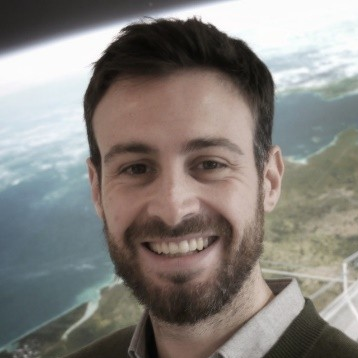Remote Sensing Data Interpretation and Validation
A special issue of Remote Sensing (ISSN 2072-4292). This special issue belongs to the section "Remote Sensing Image Processing".
Deadline for manuscript submissions: closed (31 December 2020) | Viewed by 11491
Special Issue Editors
Interests: image and signal processing; machine and deep learning; synthetic aperture radar (SAR) and SAR interferometry (InSAR); data fusion for land applications
Special Issues, Collections and Topics in MDPI journals
Interests: SAR; InSAR; multi-temporal analysis; cryosphere; natural hazards
Special Issues, Collections and Topics in MDPI journals
Special Issue Information
Dear Colleagues,
In the last decades the number of remote sensing (RS) spaceborne missions has increased, providing a large variety of global earth observation (EO) data. Accordingly with the missions’ targets, different acquisition principles and strategies have been applied, such as the use of optical rather than radar instruments, or the choice of specific orbits and geometries for the determination of coverage and revisit-time. The available imaging modes have also increased: for example, in recent months the first non-experimental spaceborne hyperspectral instruments such as DESIS and PRISMA started orbiting around our planet. This diversity has made EO a constantly growing field of applications, covering a large variety of scientific purposes and commercial applications. Indeed, breakthrough RS technologies and algorithms have been recently developed for the systematic observation of the Earth’s surface and its dynamic processes at a global scale, ranging from carbon stock balance, ocean currents, and glacier melting rates, to coastline change monitoring.
As a consequence to the increased popularity of RS applications, innovative algorithms and techniques, often borrowed from the computer vision field, are being proposed to analyze EO data. For example, recently developed image processing techniques based on deep learning methods are providing powerful tools to face challenging RS problems.
As large coverage and short revisit time are attractive for both the scientific and the commercial communities, the appropriate interpretation and validation of the derived physical quantities, influenced by the frequent lack of reliable ground truth data, remains an open research topic. Hence, one of the main RS current challenges is how to properly interpret and validate the large variety of available RS high-level products, in order to assess the accuracy of the performed measurements and correctly understand the nature of the underlying physical phenomena. Indeed, we refer to interpretation of RS data as the accurate retrieval of information about the underlying physical phenomena observed, while with validation we indicate the process of assessing, by independent means, the quality of the derived data products.
This special issue aims at highlighting best practices in RS high-level products interpretation and setting the groundwork for the standardization and validation of novel methodologies in different application fields.
Authors are encouraged to submit original papers of both theoretical and applicative contributions. Topics of interest include, but are not limited to:
- Data fusion for RS applications, both at pixel level (e.g. pan-sharpening), as well as at feature and decision level (e.g. multi-modal classification);
- Analysis and processing of RS multi-temporal data series
- Data assimilation of RS data with ground measurements
- Large-scale RS datasets for training and evaluation of machine learning algorithms.
- Deep Learning for RS image understanding (e.g., land use / land cover classification, change detection, semantic labeling, synthetic data simulation);
- Creation and standardization of benchmark datasets for the evaluation of the performance and the validation of products in specific fields of application.
- Denoising and pre-processing of RS data.
Dr. Francescopaolo Sica
Dr. Pietro Milillo
Dr. Daniele Cerra
Guest Editors
Manuscript Submission Information
Manuscripts should be submitted online at www.mdpi.com by registering and logging in to this website. Once you are registered, click here to go to the submission form. Manuscripts can be submitted until the deadline. All submissions that pass pre-check are peer-reviewed. Accepted papers will be published continuously in the journal (as soon as accepted) and will be listed together on the special issue website. Research articles, review articles as well as short communications are invited. For planned papers, a title and short abstract (about 100 words) can be sent to the Editorial Office for announcement on this website.
Submitted manuscripts should not have been published previously, nor be under consideration for publication elsewhere (except conference proceedings papers). All manuscripts are thoroughly refereed through a single-blind peer-review process. A guide for authors and other relevant information for submission of manuscripts is available on the Instructions for Authors page. Remote Sensing is an international peer-reviewed open access semimonthly journal published by MDPI.
Please visit the Instructions for Authors page before submitting a manuscript. The Article Processing Charge (APC) for publication in this open access journal is 2700 CHF (Swiss Francs). Submitted papers should be well formatted and use good English. Authors may use MDPI's English editing service prior to publication or during author revisions.
Keywords
- image understanding
- image processing
- product validation
- product interpretation
- data fusion
- deep learning.







